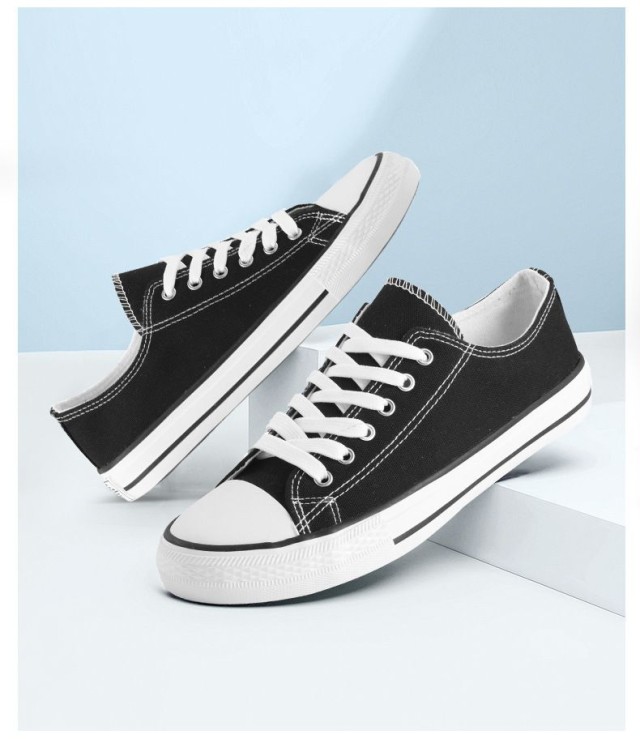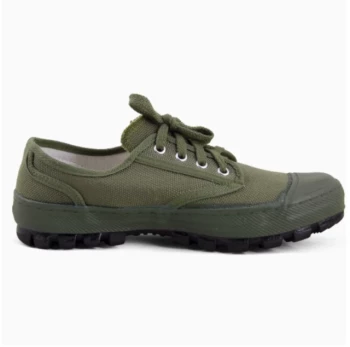For decades, vulcanized soles have transcended their industrial origins to become a cultural icon in urban fashion. This article explores the scientific ingenuity behind their durability, their organic adoption by subcultures, and how modern innovations are future-proofing this footwear staple.
The Science Behind the Sole
Vulcanization Chemistry and Structural Advantages
The vulcanization process transforms rubber into a durable yet flexible material through precise heat application. At temperatures approaching 170°C, sulfur bonds cross-link rubber polymers, creating a sole that’s:
- 30-50% more abrasion-resistant than non-vulcanized alternatives
- Exceptionally flexible for natural foot movement
- Waterproof and slip-resistant—critical for urban environments
Aluminum molds distribute heat evenly during production, ensuring consistent quality across batches. This scientific approach solves a key urban mobility challenge: footwear must withstand concrete abrasion while allowing dynamic movement.
Flexibility vs. Durability: Solving Urban Mobility Demands
Skateboarders first recognized vulcanized soles’ unique advantages:
- "Board feel"—the thin sole provides tactile feedback similar to barefoot skating
- Instant traction for quick pivots—a safety feature for street skating
- Lightweight construction reduces fatigue during prolonged wear
Research shows vulcanized outsoles maintain grip strength 20-30% longer than molded alternatives on smooth surfaces—a silent contributor to pedestrian safety in rainy cities.
From Skate Parks to City Streets
Subcultural Adoption in 90s Skateboarding Scenes
The 1990s skateboarding boom cemented vulcanized soles’ cultural identity. Their technical benefits aligned perfectly with skaters’ needs:
- Durability for ollies and kickflips
- Flexibility for foot-controlled board maneuvers
- Minimal break-in period—critical for skaters replacing shoes monthly
This organic adoption birthed an aesthetic: the slightly scuffed vulcanized sole became a badge of authenticity in skate culture.
Streetwear Brands Elevating Vulcanized Aesthetics
By the 2000s, streetwear labels reinterpreted these functional soles as fashion statements. Designers emphasized:
- Contrasting foxing stripes that highlighted the vulcanization seam
- Low-profile silhouettes that worked with slim-fit streetwear
- Colorways that celebrated wear patterns rather than hiding them
The vulcanized sole transitioned from skate parks to high-fashion collaborations, proving its versatility as both a performance feature and cultural symbol.
Future-Proofing Urban Footwear
Innovations in Vulcanized Material Sustainability
Modern manufacturers are addressing environmental concerns through:
- Bio-based rubber compounds reducing reliance on synthetic materials
- Closed-loop recycling systems for production waste
- Energy-efficient autoclaves cutting CO₂ emissions by up to 40%
Natural rubber’s biodegradability makes it ideal for circular design—a growing priority for eco-conscious urban consumers.
Case Study: How 3515 Balances Heritage and Tech
As a leader in bulk footwear production, 3515 integrates tradition with innovation by:
- Preserving classic vulcanization techniques for premium handfeel
- Incorporating recycled rubber into high-wear areas
- Developing hybrid soles that merge vulcanized flexibility with impact-absorbing foams
This approach meets distributors’ demands for durable, culturally relevant footwear that aligns with modern sustainability standards.
Ready to source vulcanized footwear that blends street credibility with industrial-grade durability? 3515’s manufacturing expertise helps brand owners and distributors deliver shoes that perform on sidewalks and resonate culturally—contact our team to discuss scalable solutions.
By understanding vulcanized soles’ journey from factory floors to fashion runways, we gain insight into how functional design becomes cultural currency. These soles aren’t just footwear components—they’re the foundation of movements.
Related Products
- Wholesale High-Traction Camo Boots - Custom Manufacturer for Brands
- Durable Rubber-Soled Utility Shoes for Wholesale & Custom Brand Manufacturing
- Wholesale Durable Camo Canvas Shoes with High-Traction Rubber Soles
- Durable Canvas Work Shoes with Rubber Lug Sole | Wholesale Manufacturer
- Durable Rubber Sole Outdoor Shoes Wholesale & Custom Manufacturing
Related Articles
- How Military Camouflage Boots Engineer Tactical Superiority: Design, Protection, and Endurance
- How Military Camouflage Boots Outperform: Engineering for Extreme Survival
- How Vulcanized Rubber Engineering Creates Unbeatable Outdoor Boots
- How Vulcanized Soles Engineer Superior Performance: A Science-Driven Guide for Athletes
- How Vulcanized Soles Fall Short—And When to Choose Alternatives



















